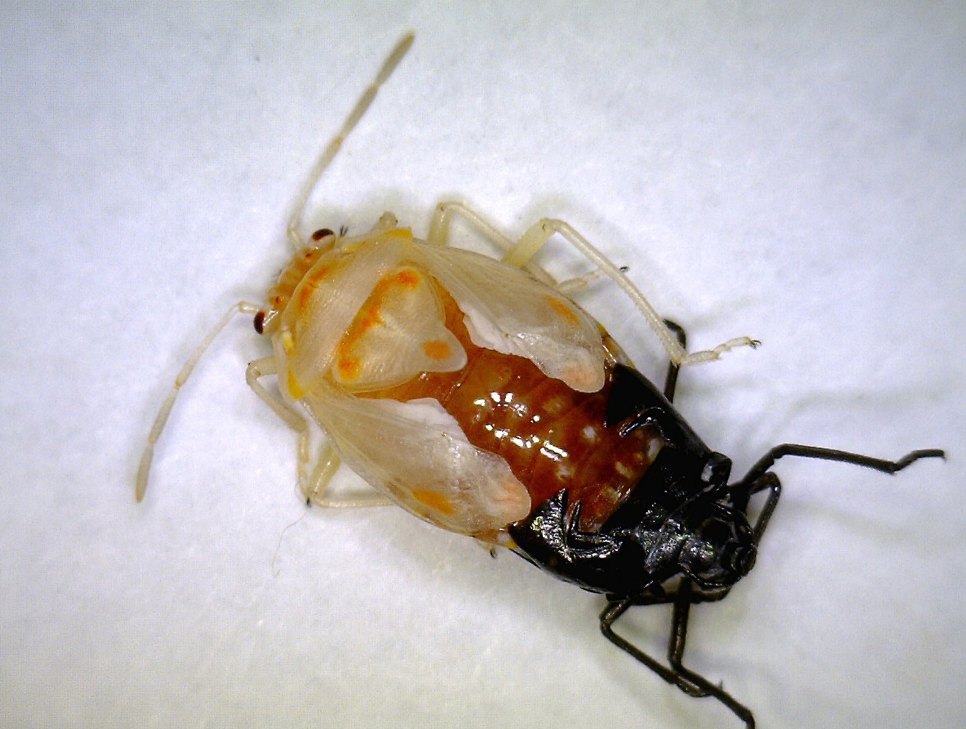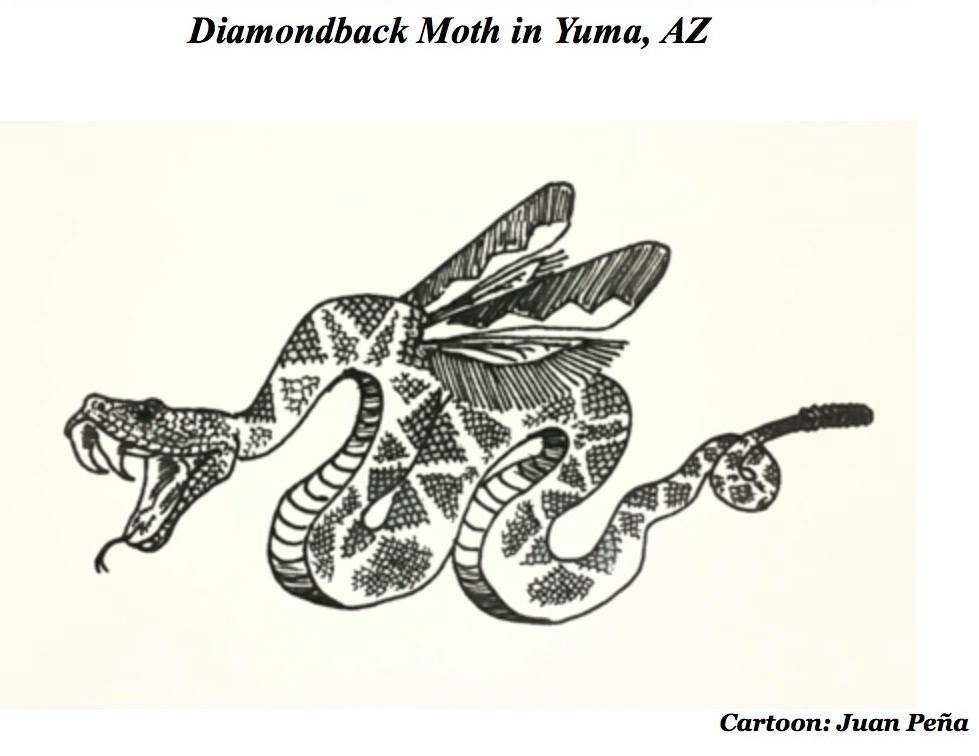Last fall, pest pressure in the desert was historically low for some pests, while
unusually heavy for other pests. Through September, insect pressure has been all
over the board. Some pests like beet armyworm have been heavy, and other like whiteflies
have been uncharacteristically light. Of course, the Yuma growing area is quite
large and pest populations can vary according to location. Here’s how I see it so
far this season.
Beet armyworm/Cabbage looper/Corn earworm: Last fall was a pretty
average worm year in produce. This fall, beet armyworm pressure has been exceptionally
heavy in some areas (Dome Valley, Yuma Valley). They also appeared a bit earlier
than normal. For instance, a review of trials here at YAC over the past 10 years
has shown that larvae typically show up about 10 -11 days after wet date. This year,
I observed larvae on lettuce at 8-9 days and had several reports from PCAs of them
consistently showing up at 6-7 days on cotyledons and 1 true leaf stage lettuce.
They appeared to slow down a bit in the past week or so. With cooler weather in
the immediate forecast, armyworm pressure should decrease. Corn earworm appeared
early in September, but are much lower now. Cabbage looper are starting to show
up on lettuce and cole crops, as expected with cooler weather. For information on
insecticides available for Lep management see
Lep Control Chart, 2018.
Diamondback moth: To date, DBM have been very light. An occasional
report of light larval populations on transplants in Roll and Dome Valley, but no
control issues reported. DBM larvae have been almost non-existent on plots at YAC,
as opposed to last fall when DBM larval population on direct-seed broccoli were
higher than what we normally see; a result of migration. However, nothing comparable
to the fall of 2016. Trap catches have overall been lighter compared with last season,
but moth numbers increased this past week (see
DBM Trap Network). It will be interesting to see if we observe an increase
in trap captures following Hurricane Rosa’s track through Northern Baja California
and Sonora. DBM have been shown to move long distances in storms.
Bagrada bug: The pest has been almost non-existent the last three
years, and this fall doesn’t appear to be any different. There have been a few reports
of adults showing up, but numbers have been light and feeding damage negligible.
Chemigation of pyrethroids have been effective.
Whitefly/CYSDV: Areawide, whiteflies in fall melons have been at
very low levels relative to years past. Whitefly adult numbers on sticky traps placed
next to melon crops have been very light so far; lighter than last year in most
areas. Accordingly, CYSDV infection is also very light in all fields from Texas
Hill to Dome Valley. Virus symptoms (yellow interveinal chlorosis) are patchy, and
mainly on the edges of fields suggesting PCAs and growers are doing a great job
of preventing secondary infection. Areawide, whiteflies were similarly light in
produce crops with an occasional flare-up in some isolated areas. Trap catches are
down with the exception of locations near recently defoliated cotton (see
Areawide Trap Network).
Name that Pest
 Bagrada Bug
Bagrada Bug
Areawide Diamondback Moth Trapping Network
In response to the recent outbreaks of Diamondback moth (DBM) , Plutella xylostella
in Yuma, we have established a pheromone trap network designed to monitor the activity
and movement of adult populations of DBM. PCAs have had difficulty controlling DBM
in cabbage, broccoli and cauliflower since October. Traps have been placed in Roll,
Wellton, Dome Valley, Gila Valley and Yuma Valley in locations where cole crops
are presently being grown or in areas where infestations were known to occur this
fall.
Click here to see results of DBM pheromone trap network.
Remember, When in Doubt . . . . . “SCOUT”

|




